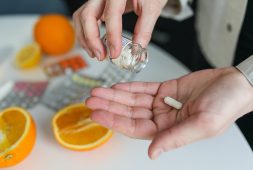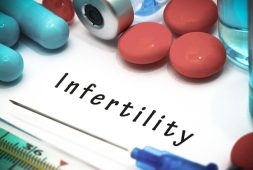Probiotics And Their Byproducts Have Potential To Target Antibiotic-Resistant Bacteria, Study Finds

In a recent review featured in the Microorganisms Journal, researchers delved into existing data regarding the utilization of probiotics and antimicrobial peptides (AMPs) in combating multi-drug-resistant (MDR) bacteria, with a specific emphasis on vancomycin-resistant Enterococcus (VRE) and methicillin-resistant Staphylococcus aureus (MRSA).
Study Background
The backdrop of the study is the global concern surrounding antibiotic resistance, especially concerning major health threats such as MRSA and vancomycin-resistant Enterococcus. Traditional treatments for these infections often pose challenges, requiring alternative medications that come with reduced efficacy, heightened costs, and adverse side effects. Consequently, there is an urgent need for innovative approaches to combat antibiotic-resistant bacteria.
About the Review
The researchers presented probiotics and AMPs as potential alternatives or supplementary strategies to conventional antimicrobials in addressing MRSA and VRE infections.
Traditional Treatment Options and Associated Challenges
Multi-drug resistant bacterial infections pose significant challenges to conventional antibiotic therapies, with many antibiotics exhibiting toxicity, leading to altered pharmacokinetics in critically ill patients.
Additionally, the lack of standardized therapeutic medication monitoring and inadequate antimicrobial stewardship measures contribute to the rise of widely resistant and pan-drug-resistant strains.
The difficulty in antibiotic susceptibility testing, particularly for Gram-positive species like MRSA and VRE, further complicates treatment. The review outlined various oral and intravenous antibiotic options for these infections, highlighting the complexities associated with choosing the right medication based on the patient’s condition and the location of the infection.
Severe skin and soft tissue infections (SSTI) in hospitalized patients can be treated with intravenous (IV) vancomycin, daptomycin, telavancin, or oral/IV clindamycin or linezolid.
For MRSA bacteremia and infective endocarditis, vancomycin or daptomycin is recommended, with linezolid and clindamycin as alternatives for MRSA pneumonia.
Various antibiotics such as daptomycin, linezolid, tedizolid, teicoplanin, dalbavancin, telavancin, oritavancin, and different tetracycline derivatives are effective against vancomycin-resistant Enterococcus (VRE).
In cases of VRE-caused infective endocarditis, the American Heart Association suggests linezolid or daptomycin. For persistent bacteremia due to VRE endocarditis.
Harnessing Probiotics to Confront Antibiotic-Resistant Bacteria
The review also explored the use of probiotics and AMPs as potential treatments for a range of conditions, including acute infectious diarrhea, necrotizing enterocolitis, acute respiratory tract infections, infantile colic, and antibiotic-associated diarrhea.
Probiotics were found to influence the host immune system, limit pathogen growth and adhesion, break biofilms, and enhance the function of the intestinal barrier.
Again, the study suggests that probiotics could be instrumental in combating developing resistant infections by inhibiting pathogen growth, disrupting biofilm formation, and interfering with quorum sensing. Specific strains of lactobacilli were found to be effective against S. aureus, and bacteriocins like Micasin demonstrated inhibitory effects on Gram-positive and Gram-negative bacteria, including MRSA.
Probiotic lactobacilli have been found to effectively eliminate chronic MRSA carriage in the nasal and throat areas. The use of L. rhamnosus as a treatment has shown promise in reducing MRSA colonization in various locations, including the oropharyngeal, nasal, intestinal, and axillary regions.
Individuals who consumed yogurt containing L. rhamnosus successfully cleared their VRE infections. Additionally, the use of S. boulardii and E. coli Nissle therapies prevented VRE outbreaks in a facility dedicated to early rehabilitation.
Nisin functions by inhibiting cell wall formation, while mersacidin works to inhibit gram-positive bacteria and combat food-borne diseases by triggering the cell wall stress response.
Study Conclusions
The review concluded by highlighting the efficiency of probiotics against MDR bacteria like MRSA and VRE, positing them as potential alternatives or adjuncts to conventional antibiotics. However, challenges such as standardized techniques for therapeutic drug monitoring (TDM) and determining appropriate target antibiotic doses persist.
As the prevalence of MDR and pan-drug-resistant microorganisms continues to rise, there is an imperative need for the development of novel and safer therapeutic approaches.
Probiotics and their bioactive products were identified as agents that can enhance mucus barrier integrity, inhibit MDR bacteria growth, prevent biofilm formation, disrupt quorum sensing, and regulate hose immunological responses to pathogens.
Nevertheless, the standardized production techniques, appropriate regimens, and safety considerations in immunocompromised and frail patients pose ongoing challenges in the utilization of probiotics.
Moreover, the study suggested that AMPs derived from probiotic strains, which do not acquire tolerance to microorganisms, could be a valuable alternative for individuals with compromised immune systems. However, natural AMPs face challenges like proteolytic breakdown and limited oral bioavailability, necessitating modifications for enhanced resistance to degradation and suitability for oral administration.



